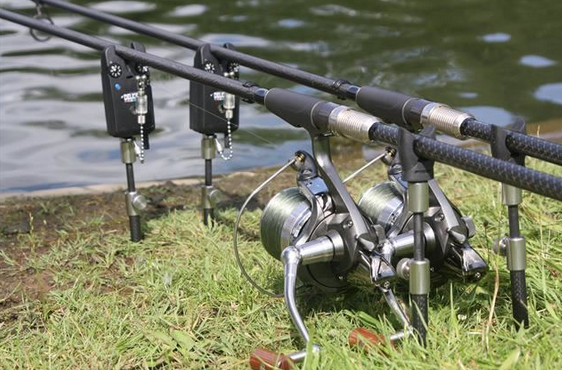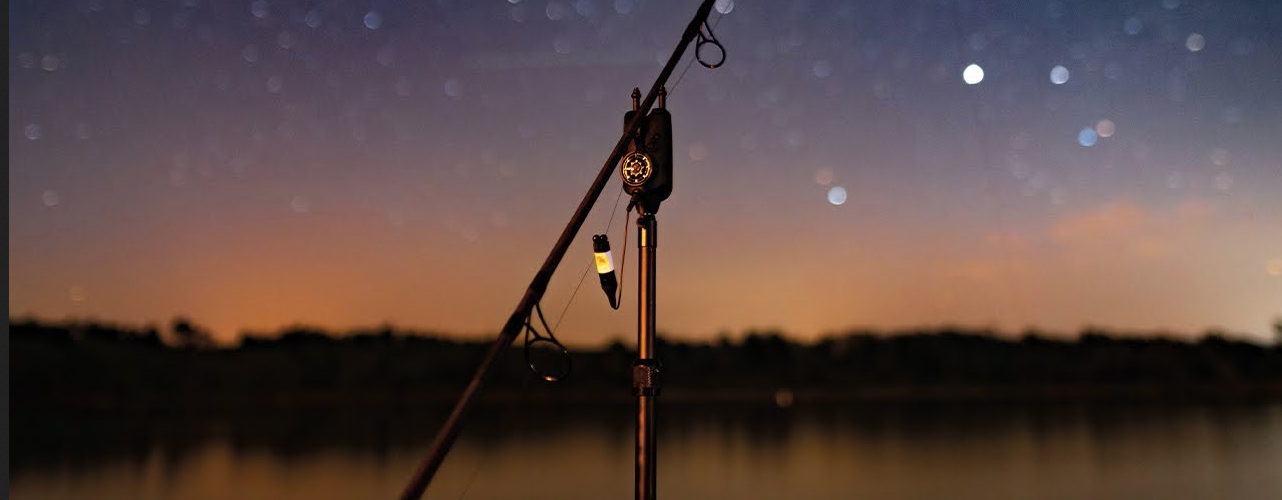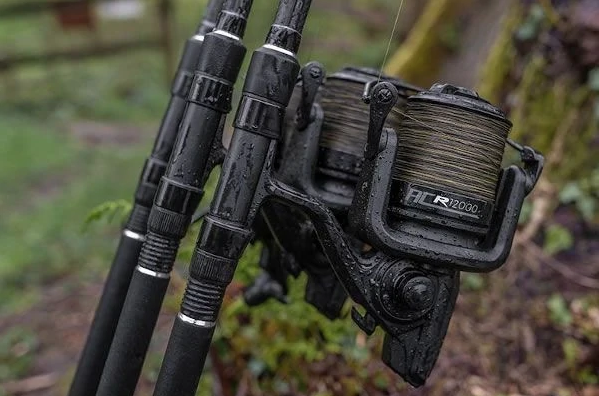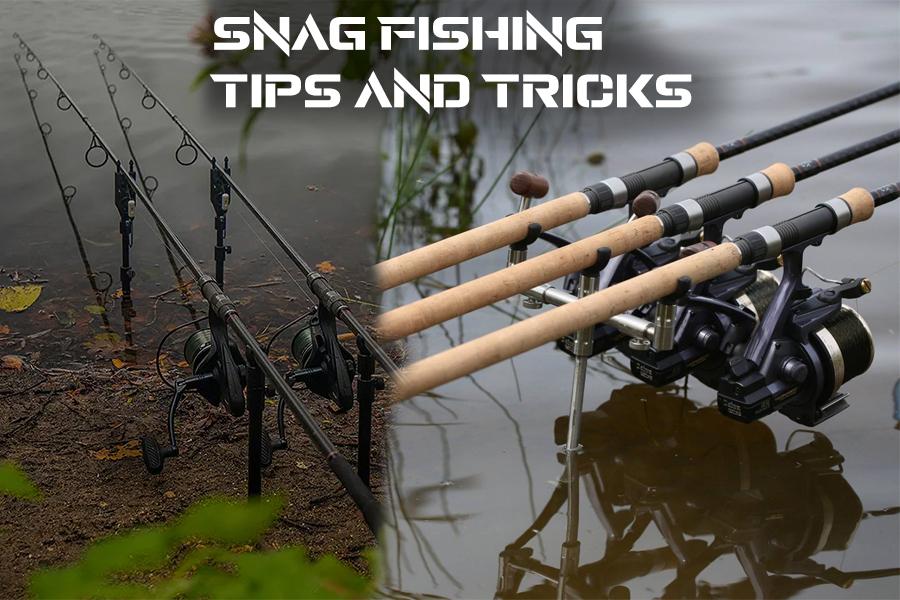Snag Fishing - Some Tips to Prevent You Loosing Fish
Fishing towards snags can be one of the best ways to catch fish off the bottom. The fish feel safe under the cover of a snag meaning they are going to be more confident. However fishing to snags can cost you fish as well and you have to fish correctly. There is more to consider to make sure you are fishing safely. Here are a couple of tips to ensure you land as much fish as possible when snag fishing.
Clip Up With Your Fishing Rods
Instead of clipping up with a spod or marker rod, use your fishing rods instead. With snag fishing, you want your casting to be spot on to aviod getting your rig caught in a tree. When clipping up with a spod / marker rod, you are naturally going to hit that clip a little bit different due to a stiffer rod and a braided mainline. When casting your fishing rods, its easy to hit the clip a bit differently so the rig could travel further in a certain direction meaning more chance off casting straight into a bush. If you clip up with your fishing rods, you know exacly how the lead is going to land. This will help your accuracy and will prevent you from getting rigs stuck in the tree.
Lock Your Drag Up
Keep your drag locked up whilst the rod is on the alarm. This stops the fish from taking any line and going straight into a snag. If the fish takes any line on the bite it is likely the fish will swim straight into the snag and do you solid before you even pick your rod up.
To make sure you don't loose a rod from fishing locked up, here is some different methods of keeping your rod secure.
Peg Your Rod Buts:
Peggs are one of the best ways to keep your rod secure to the alarm. They prevent the rod moving forward on the take and keep the rod nice and secure. I have used this many of times when fishing locked up and it works a treat. You just have to be on your rods before the pressure becomes too much for your gear.
Banksticks:
Make sure that your banksticks are secure into the ground, any movement could cost you a rod! If you are using a pod, ensure it is sturdy enough to withstand savage bites. The best way to do this is pull the line from the end of your rod and see how your set up stands up against the pressure.

Butt Eye Behind the Alarm:
Putting your butt eye infront of the alarm will keep the rod secure on the alarm. If the rod moves forward then the butt eye won't go past the alarm, keeping your rod on the bank.
As soon as you pick that rod up walk back away from the snag. Once the fish is past the snag you can relax a bit but waking backwards is the best way to pull a fish away from a snag.
Snag ears are an essential for keeping your rod on the alarm during the take as well. This makes for a more secure set up.

Tackle
When snag fishing, you often need to use stronger tackle than what you normally would. As explained below here is some key factors to make sure that you are using the right tackle to get the fish landed.
Strong Tackle:
Strong tackle is needed to be able to control the fish around snags without the risk of hookpulls. With snag fishing, often you have to put a lot more pressure on your tackle in order to control the fish. The last thing you want to happen is loosing a fish to a snap off or hook pull. Upping your line diameter can make a massive difference. For monofilament, 20lb breaking strain is a reliable diameter for snag fishing.
For rods I would personally not use anything less than a 3lb tc rod, ideally a 3 1/4 or a 3 1/2 rod so you have that little extra backbone to control the fish. 12fts, 10fts and 9fts are perfect for the job. 6fts are ok if your fishing in short, but anything over 20 yards you may feel a bit undergunned.
If allowed, use a leadcore / leadless leader to give you're tackle a bit more strength and to pin your line on the bottom of the lake. Snag leaders are also excellent if the lake rules apply. Attach the snag leader with a back to back grinner knot and apply 3-6 meters.
If the snags are on the bottom of the lake, dropping your leads will result in the fish coming to the surface on the take. This can help keep the fish clearer of snags which are on the lake bottom.
Single Sticks Over Buzz Bars
When fishing right up against a snag single sticks are a lot more practical. With single sticks, you can have your rod pointed directly at where you are fishing which as much as some anglers consider this to look "carpy" when the rod bends on the bite, this increases chances of the fish kiting into a snag which can ultimatley cost you a fish. As well as this you will get better line lay and better bite indication, which is important when you need to be on your rods!
Braid Over Mono
Braided mainline has a bigger advantage over Mono. The biggest being there is no stretch in braid meaning you have a lot more control of the fish. When fishing locked up, a carp can use the stretch in the mono to bury itself in the snag, braid reduces this problem. When playing the fish past snags the lack of stratch gives you more control to mover the fish around the snag.

Fish Saftey
There are situations where it is not safe on the fish to be fishing a snaggy area in the night. If your fishing an area where you need to be instantly on your rod as soon as you get a bite then it is not safe to fish in the night unless you are staying awake all night. It is important to make sure you don't loose fish in snags, as a snap up can cause the fish to be tethered to a snag which can result in the death of the fish. In the situation that you do have a fish stuck in the snags then ring the fishery owner for advice / help or if allowed, wade out to the snag to free the fish. Fish saftey is most important, it is never worth fishing a spot which you cannot fish safely.
Do as much as you can to ensure the fish does not get snagged. However in the rare event, never pull for a break when a fish is snagged, keep constant pressure and eventually the fish should budge. Breaking off when a fish is snagged can easily result in the death of a fish.
